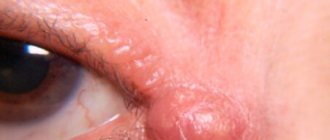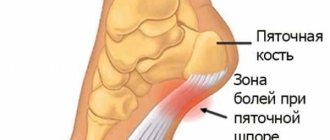Rabies in humans is a viral disease that causes inflammation of the brain with damage to the central nervous system. It is a typical zoonotic disease. That is, the rabies virus is transmitted only through the bite of a sick animal.
However, recent studies have shown that infection is possible not only through a bite, but also through aerogenic, nutritional and transplacental transmission of the virus. Moreover, the possibility of transmission of the virus from person to person has been noted. Most likely, a mutation will allow this to be done in the future. This became obvious with the example of coronavirus.
The rabies virus, entering the human body, enters the salivary glands and nerve cells of the brain and affects them, leading to severe irreversible damage. It is irreversible, since rabies cannot be treated. Although several cases of cure are known. But a few cases in the entire history of observations are practically zero.
What is dangerous throughout history is that there have been recorded cases in which a person became ill after being bitten by an apparently healthy animal. That is, the carrier of the virus was asymptomatic for a long time.
What is rabies in humans
Rabies is a viral disease caused by RNA viruses from the Rhabdoviridae family. Rabies in humans occurs with severe damage to the central nervous system (CNS), leading to death.
For reference. There is no effective treatment for rabies in humans. The Milwaukee Protocol is used as an experimental therapy (an induced coma and antiviral drugs are used).
A total of 18 cases of rabies cure have been recorded worldwide.
The only effective means of preventing rabies in humans is the administration of rabies immunoglobulin and immunization with rabies vaccines.
According to the ICD 10 classification, rabies is assigned code A82. To designate urban rabies in humans, the code A82.1 is used, and for forest rabies A82.0. For unspecified rabies, code A82.9 is assigned.
Why should you contact the Mama Papa Ya clinic?
The network of family clinics “Mama Papa Ya”, whose branches are located in different districts of Moscow, provides services for the prevention of rabies through vaccination. To get vaccinated, you need to make an appointment with a therapist or pediatrician, and then get an injection there. Advantages of our clinic:
detailed consultation with a specialist before vaccination;
- the opportunity to visit an allergist for relevant diseases;
- various laboratory diagnostics;
- affordable prices and no queues.
For more detailed information, make an appointment with a specialist by phone or on our website.
Reviews
Good clinic, good doctor!
Raisa Vasilievna can clearly and clearly explain what the problem is. If something is wrong, she speaks about everything directly, not in a veiled way, as other doctors sometimes do. I don’t regret that I ended up with her. Anna
I would like to express my gratitude to the staff of the clinic: Mom, Dad, and me. The clinic has a very friendly atmosphere, a very friendly and cheerful team and highly qualified specialists. Thank you very much! I wish your clinic prosperity.
Anonymous user
Today I had a mole removed on my face from dermatologist I.A. Kodareva. The doctor is very neat! Correct! Thanks a lot! Administrator Yulia Borshchevskaya is friendly and accurately fulfills her duties.
Belova E.M.
Today I was treated at the clinic, I was satisfied with the staff, as well as the gynecologist. Everyone treats patients with respect and attention. Many thanks to them and continued prosperity.
Anonymous user
The Mama Papa Ya clinic in Lyubertsy is very good. The team is friendly and responsive. I recommend this clinic to all my friends. Thanks to all doctors and administrators. I wish the clinic prosperity and many adequate clients.
Iratyev V.V.
We visited the “Mama Papa Ya” Clinic with our child. A consultation with a pediatric cardiologist was needed. I liked the clinic. Good service, doctors. There was no queue, everything was the same price.
Evgeniya
I liked the first visit. They examined me carefully, prescribed additional examinations, and gave me good recommendations. I will continue treatment further; I liked the conditions at the clinic.
Christina
The doctor carefully examined my husband, prescribed an ECG and made a preliminary diagnosis. She gave recommendations on our situation and ordered additional examination. No comments so far. Financial agreements have been met.
Marina Petrovna
I really liked the clinic. Helpful staff. I had an appointment with gynecologist E.A. Mikhailova. I was satisfied, there are more such doctors. Thank you!!!
Olga
Ways of transmission of rabies
The main reservoir of the infectious agent is wild mammals.
In this regard, two epidemic types of rabies are distinguished:
- urban (domestic cats and dogs serve as reservoirs for the rabies virus);
- forest (wild animals act as a reservoir).
On the territory of the Russian Federation, the main sources of the rabies virus are foxes, wolves, bats, raccoon dogs, corsacs and arctic foxes. The main carrier of urban rabies (more than 99%) is dogs.
For reference. Due to the intensive circulation of the virus in nature, atypical carriers of rabies (mice, nutria, squirrels, rats, ferrets) have been increasingly recorded in recent years.
Domestic animals can become infected with the rabies virus from wild ones.
Infection with the rabies virus occurs when:
- bites of infected animals;
- salivation of damaged skin and mucous membranes;
- tissue transplants from infected donors.
A case of airborne contamination during a laboratory accident is also described. Intact skin is impermeable to the rabies virus, and the virus can penetrate through the mucous membranes, even if there are no microdamages.
The pathogen is not transmitted from person to person. However, when working with sick people, it is still necessary to follow precautionary rules (the use of special protective clothing, thorough disinfection of equipment, medical instruments and premises is recommended).
Preventive actions
After infection, people require vaccination along with the introduction of immunoglobulin. Vaccination of animals against this disease is preventive, vaccines. When prophylactically vaccinating people at risk, only inactivated vaccines are allowed for use.
To eliminate this disease, the following points are extremely important:
- reducing the number of red foxes and wolves by shooting while preserving the species.
- universal annual immunization of dogs and cats belonging to the population. Dogs are subject to registration for rabies vaccination.
- Promoting knowledge among the population about the consequences of rabies and how it spreads using visual materials (oral conversations, posters, leaflets, videos) in order to create conscious and active participation in the fight against rabies.
- reducing the number of stray animals - catching, sterilization. Dogs without collars are considered stray dogs.
- vaccination of wild carnivores with oral vaccines. The experience of European countries has proven that within a few years of mass annual vaccination it is possible to achieve a significant reduction or even elimination of sylvanic rabies.
Share:
What affects the risk of contracting the rabies virus?
The likelihood of developing the disease directly depends on whether the animal’s saliva contained the virus during salivation or bite. Since approximately 45-50% of dogs with rabies do not shed the virus in their saliva.
For reference. According to statistics, after contact with a rabid animal, from 12 to 30% of people become ill (only patients not vaccinated with rabies vaccine are taken into account).
Despite this, the lack of effective treatment and a 100% mortality rate require a complete treatment and prophylactic complex after contact with an infected animal.
How common is the disease?
The disease is widespread (the only exceptions are Australia, Oceania and Antarctica). Every year, this infection kills about 70 thousand people around the world. Most often, cases of rabies are recorded in Asia, Africa and Latin America.
What preventive measures are there if you are bitten by an animal?
All kinds of recommendations for the prevention and treatment of rabies - the destruction of enraged animals, cauterization of bitten areas in people with a hot iron - did not produce any effect. Almost every person bitten by a rabid animal was doomed to death. Until the 80s of the 19th century, people did not have a reliable means of protection against this terrible disease.
The great French scientist Louis Pasteur has the honor of creating a vaccine against rabies, which was successfully used for the first time on July 6, 1885. Then, thanks to vaccination, a boy bitten by a rabid dog was saved. And some time later, in a French village, children playing were attacked by a rabid dog. Defending them, fifteen-year-old shepherd Jean Jupille accomplished a real feat. He managed to tie the dog's face with a belt whip and kill it with his wooden shoe. But the boy's entire body was covered with wounds. Barely alive, Jean was brought to Paris. Pasteur saved the hero.
To this day, vaccinations remain the only reliable means of protecting people after being bitten by an animal sick or suspected of having rabies. These include the administration of a vaccine and, if necessary, immunoglobulin.
What you need to know about preventive vaccinations:
- if the doctor has prescribed vaccinations, they should be started immediately;
- Under no circumstances should you skip the next vaccination;
- the course of vaccinations prescribed by the doctor must be completed in full;
- a person who is vaccinated is not dangerous to anyone;
- During vaccinations, you should not drink alcoholic beverages for 6 months after their completion; you should avoid overwork, hypothermia, and overheating.
Along with vaccinations, on the recommendation of Belarusian scientists, antibiotic prophylaxis is also carried out.
Pathogenesis of the development of rabies in humans after a bite
After biting or salivating on damaged skin or mucous membranes, the rabies virus in humans begins to invade the cells of the striated muscles.
The pathogen penetrates into nerve cells through neuromuscular synapses. Golgi tendon receptors can also serve as channels for viral advancement.
Then the rabies virus slowly (at a speed of approximately 3 millimeters per hour) begins to move along the fibers of the central nervous system (apparently, the advancement of the pathogen is facilitated by axoplasmic current).
Cases of natural infection are not characterized by the development of viremia (circulation of viruses in the blood), however, during experiments on animals, isolated cases of viremia were recorded.
For reference. Upon reaching the central nervous system, the virus begins to actively infect neurons. However, the process of virus reproduction occurs almost entirely in the cells of the gray matter.
After the reproduction stage, viral particles begin the process of moving back through the fibers of the autonomic nervous system. Subsequently, the virus can be detected in the salivary glands (this is due to the fact that the pathogen can be detected in saliva already at the end of the incubation period), lacrimal glands, hair follicles, cornea, kidneys, lungs, pancreas, muscles and skin, and heart muscle.
Due to the fact that the pathogen is detected in hair follicles and corneal cells, skin biopsies and corneal smears can be used for intravital diagnosis of the disease.
For reference. Death from rabies occurs due to depression of the respiratory and vasomotor centers.
The path to salvation
According to Rospotrebnadzor, every year in Russia from 250 to 450 thousand people who have suffered from animal bites receive anti-rabies treatment, about a quarter of whom are children. The following rabies vaccines are used in our country: Rabivak-Vnukovo-32 Culture-inactivated rabies vaccine for human immunization (FSUE NPO Microgen of the Russian Ministry of Health); KOKAV Anti-rabies vaccine, cultured, concentrated, purified, inactivated (FSUE NPO Microgen, Ministry of Health of Russia); Rabies vaccine culture concentrated purified inactivated dry (Enterprise for the production of bacterial and viral preparations of the M.P. Chumakov Institute of Poliomyelitis and Viral Encephalitis of the Russian Academy of Medical Sciences Federal State Unitary Enterprise). Rabipur is also registered in Russia (Novartis Vaccines and Diagnostics GmbH and Co.KG, Germany). The total market capacity of the Russian Federation (treatment + prevention) is in the range of 1.8–3 million doses.
In accordance with WHO recommendations, the immunological activity of the domestic non-concentrated vaccine (CAV) is at least 0.5 IU/ml, and the concentrated COCAV vaccine is at least 2.5 IU/ml. According to Rina Timerbaeva, deputy director for production and technology of the branch of the Federal State Unitary Enterprise NPO Microgen of the Ministry of Health of the Russian Federation Immunopreparat (Ufa), the use of COCAV made it possible to reduce the number of injections (up to 6 times) and administration doses (from 5 ml in 2 places to 2 .5 ml to 1 ml per injection). This significantly reduces the antigen load, reduces adverse reactions and post-vaccination complications. The local reaction is characterized by slight swelling, redness, itching, and enlargement of regional lymph nodes. The general reaction can manifest itself in the form of malaise, headache, and weakness. In very rare cases, the possibility of neurological symptoms is expected. In this case, the victim should be urgently hospitalized so as not to miss the development of encephalitis.
“Post-vaccination complications are caused, first of all, not by the insufficient quality of the domestic drug, but by the intensity of the immune response, individual characteristics and reactivity of the vaccinee,” Rina Timerbaeva is sure. Therefore, when carrying out urgent rabies prophylaxis, it is worth abandoning the search for imported vaccines, since delay can cost lives. For preventive immunization, it is possible to use an imported vaccine if there is time and money to find it.
Article on the topic
World Rabies Day. What to do if you are bitten by an animal? When summarizing observations of vaccinated people (1,708 cases), an amazing pattern emerged: vaccination with the Fermi rabies vaccine stimulates the immune system, as evidenced by a sharp decrease in the number of cases of bronchial asthma, gastric ulcers, collagenosis, herpetic lesions and periodontal disease, while influenza and ARVI were milder.
Anti-rabies immunoglobulins, which are the second component of urgent rabies prevention, are divided into homologous, obtained from human donor blood, and heterologous, obtained from the immune blood of horses. The negative side of all heterologous AIH is the risk of developing allergic complications. After the administration of rabies immunoglobulin, anaphylactic shock and a local allergic reaction may occur, since it is produced on the basis of horse protein. Its administration is recommended in a hospital setting. The homologous drug "Imogam Raj" produced in France is registered in some CIS countries. However, it is almost inaccessible due to its high cost and small production volume, which are caused by the objective difficulties of immunizing volunteers and the insufficient raw material base. There are no plans to produce homologous AIG in Russia in the near future.
Experts emphasize that rabies remains a real and formidable danger. According to the Ministry of Health, of those who died from hydrophobia in 2008–2011, 40 people (70.2%) did not seek medical help and, accordingly, did not receive timely anti-rabies treatment; 10 people (17.5%), having sought medical help on time, refused anti-rabies treatment. In one case, after dangerously localized bites inflicted by a wolf, rabies immunoglobulin was not prescribed, which contributed to the development of the disease.
“Despite the apparent simplicity of specific anti-rabies treatment, quite often there are serious violations in the prescription and implementation of a course of anti-rabies treatment, associated primarily with unsatisfactory knowledge of the instructions for using the drugs,” says Rina Timerbaeva. Only active educational work among the population, as well as improving the qualifications of medical workers, can reduce mortality.
Figures and facts
The average annual number of rabies cases in animals is highest in Europe and South America and lowest in Africa, while the incidence rate in humans is highest in Asia and lowest in North America. Rabies kills more than 55,000 people each year, mostly in Asia and Africa. At the same time, more than 15 million people in the world receive vaccination to prevent the development of the disease. This prevents hundreds of thousands of deaths from rabies each year. In the first quarter of 2013, animal rabies was detected in 37 constituent entities of the Russian Federation, including Moscow and the Moscow region. Traditionally, St. Petersburg and the Leningrad region remain rabies-free. The sad leaders are Belgorod region (79 cases in animals), Saratov region (64 cases), Moscow region (40), Voronezh region (37) and Tambov region (36). Two people fell ill (and died) in the Kursk and Vladimir regions.
How does rabies manifest itself?
The incubation period of rabies in humans (IP) typically ranges from 1 to 3 months. Less often, it can be reduced to a week or increased to a year. The length of the incubation period is determined by the depth and breadth of the bite, as well as the distance of the bite from the brain. The further the bite, the longer the IP.
For reference. The longest IP is observed for bites to the lower extremities, the shortest for bites to the face, head and perineum.
With multiple deep bites, the IP is also significantly reduced.
After the end of the incubation period, a prodromal period begins, lasting from one to three days.
Unpleasant sensations, increased skin sensitivity, and moderate pain appear in the area of the bite. insomnia , increased irritability, apathy, depression, and a constant feeling of fear and melancholy are also often noted Sensitivity to sounds and light increases sharply. Sometimes there may be shortness of breath and a constant feeling of lack of air.
There may be increased emotional activity.
The first symptoms of rabies in humans
The first specific manifestations include the appearance of signs of acute encephalitis. The patient is bothered by acute attacks of psychomotor agitation.
After some time the following appears:
- paroxysmal disturbances of consciousness;
- hallucinations;
- attacks of aggressiveness, violence, delusions and manias;
- tremors and muscle spasms, seizures.
Patients try to run away, bite people standing nearby, or beat them up.
For reference. Against the background of pronounced psychomotor agitation, convulsions of the pharyngeal or laryngeal muscles, spasms of the diaphragm muscles, and respiratory disorders may appear.
Severe respiratory distress, increased salivation and vomiting, leading to dehydration, are also common.
Attacks can last from a few seconds to several minutes. As the disease progresses, the frequency and duration of attacks increase.
Development of the disease
The development of an attack is provoked by:
- an attempt to drink (patients with rabies have severe hydrophobia - fear of water);
- a sharp breath of air (aerophobia);
- exposure to bright lights (photophobia) or loud sounds (acoustic phobia).
During an acute attack, respiratory arrest may occur. In the interictal period, the patient’s condition stabilizes and consciousness clears.
Gradually, symptoms of damage to the stem functions of the nervous system join the manifestations of encephalitis . Damage to the cranial nerves (cranial nerves) is accompanied by impaired swallowing, paresis or paralysis of the facial muscles, and the development of optic nerve nephritis.
For reference. Against the background of impaired swallowing and increased salivation, foam appears at the mouth (a very characteristic symptom for patients with rabies).
Tachycardia (increased heart rate), arrhythmias (heart rhythm disturbances), and fever are also noted.
Why is the rabies virus dangerous?
The rabies virus leads to the development of acute, rapidly progressive encephalomyelitis . There is no treatment for rabies. Therefore, the disease ends in death.
For reference. In the absence of intensive care, the patient dies 4 days after the first symptoms of infection appear. With intensive care, the patient dies within 20 days (often faster). Death occurs from late complications (antidiuretic syndrome, hemodynamic disturbances, severe arrhythmias, gastrointestinal bleeding, thrombocytopenia).
Post-mortem autopsies show the consequences of rabies especially clearly. Pathologists reveal edema and swelling of the brain and spinal cord with severe hyperemia, accompanied by petichial hemorrhages.
Although the detected inflammation in brain tissue is often limited to some extent. Microscopically, the inflammatory process is detected in the trigeminal nerves, gasserian ganglia, intervertebral and superior cervical sympathetic ganglia and in the gray matter of the brain.
Characteristic of rabies is the appearance of cytoplasmic inclusions - Babes-Negri bodies, which are most often found in the cells of the hippocampus and in the piriform neurocytes of the cerebellum.
It can be seen that the rabies virus causes significant damage to the central nervous system.
Diagnosis of rabies in humans
For intravital detection of the disease, viral antigens can be isolated in corneal imprints or in skin biopsies (taken from the skin of the back of the head). Also, from 7-10 days of illness, an antibody test can be performed.
For reference. For unvaccinated patients, in order to confirm the diagnosis, an increase in antibody titers by 4 times is required.
When examining vaccinated patients, the absolute levels of neutralizing antibodies in the blood and cerebrospinal fluid are taken into account. After prophylaxis, the level of these antibodies in the cerebrospinal fluid is zero or minimal (less than 1:64). And with the development of rabies, the antibody titer in the cerebrospinal fluid can range from 1:200 to 1:160,000.
According to indications, PCR diagnostics can be additionally used.
To carry out post-mortem diagnosis of rabies, a histological express technique is used, aimed at identifying Babes-Negri bodies in a smear-imprint of the brain. The result can be obtained in 1-2 hours (the reliability of the study is about 85-90%).











